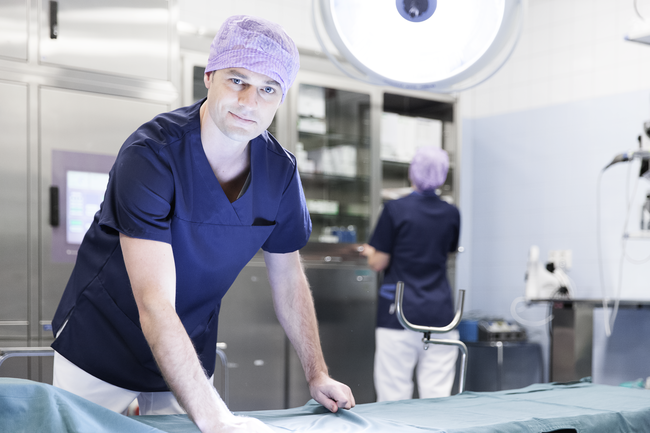Global Brand Lindström Is Now Diversifying Into The Healthcare Sector To Combat HCAIs
The importance of an effective, efficient commercial laundry service in the healthcare sector cannot be overlooked when it comes to managing productivity and infection control.
In 2020, the total healthcare expenditure was £257.6 billion, equating to £3,840 per person. This equates to 12% of the overall gross domestic product (GDP). This makes the UK one of the largest spenders on healthcare in the EU/EEA/Switzerland in terms of GDP percentage. As of 1st May 2022, there have been 61,654,788 patients registered at GP practices in England. Furthermore, the UK also has a growing private healthcare sector that is still much smaller than the public sector.
· 86101 – Hospital activities including Private and NHS Hospitals
· 86102 – Medical nursing home activities
· 86210 – General medical practice activities
· 86220 – Specialist medical practice activities
· 86230 – Dental practice activities
· 87100 – Residential nursing care activities
· 87200 – Residential care activities for learning disabilities, mental health, and substance abuse
· 87300 – Residential care activities for the elderly and disabled
These services are responsible for providing a safe, clean adequate, and timely supply of linen. It is vital all linen including uniforms are at the right place, right time in the correct quantities. These services are critical for healthcare professionals, patients, and visitors’ health and safety. Laundry within a healthcare setting handles items contaminated by bio-fluids such as blood, urine, and excrement. All of which can spread infection, therefore, having an effective laundry service is of utmost importance to manage productivity and infection control.
Linen is the general term for all textiles used within a healthcare setting. According to the HTM0104 linen refers to “all reusable textile items requiring cleaning/disinfection via laundry processing including bedding, towels, blankets, hoist slings, patient clothing and staff clothing such as nursing tunics, medical trousers, and scrubs”. Cotton is often the preferred material and is frequently used due to it being comfortable and cheaper.
The phrase “hygienically clean” acts as a level and guide to refer to the reduction of pathogens. This term is used across various textile products at which the level of existing pathogens poses no threat to human illness. Hygienically clean linen means both: Hygienic (pathogen elimination); and Clean (inorganic removal, attractive appearance).
The most common HCAIs are Escherichia coli (E. coli), Staphylococcus aureus (S. aureus) and Clostridium difficile (C. difficile). With C. difficile infections accounting for 5.6% of all infections within NHS England. According to the NHS, the percentages for HCAIs within hospitals are as follows: 22.8% are respiratory tract infections such as pneumonia, 17.2% from urinary tract infections, 15.7% from surgical site infections (SSI), 10.5% due to sepsis, 8.8% from gastrointestinal infections and 7.3% of bloodstream infections. It has been reported that on average 3.5% of patients who acquire a HCAI die from the infection.
Surveillance covers:
· Bacteraemia
· Gram-negative bacteria
· Clostridioides difficile infection
· Escherichia coli
· Pseudomonas aeruginosa
· Klebsiella species
· Staphylococcus aureus
· Surgical site infection
Their service ensures the establishment always has the correct number of hygienically clean items at its disposal. Furthermore, Lindström is highly sustainably aware and takes the impact on the environment very seriously. They ensure they do everything they can to reduce their carbon footprints such as reducing energy consumption and recycling end-of-life textiles.

